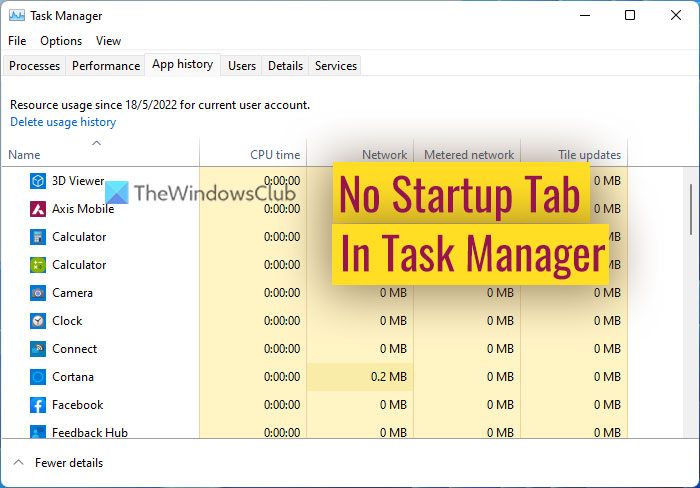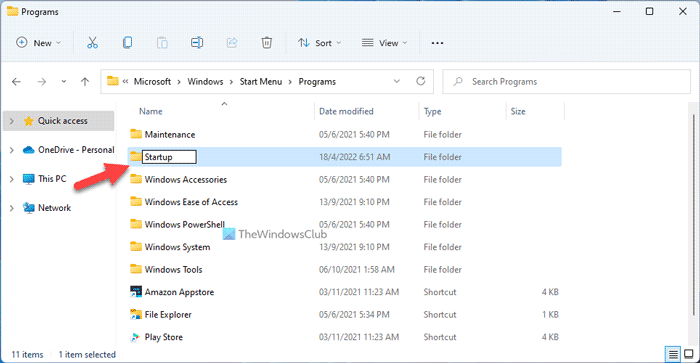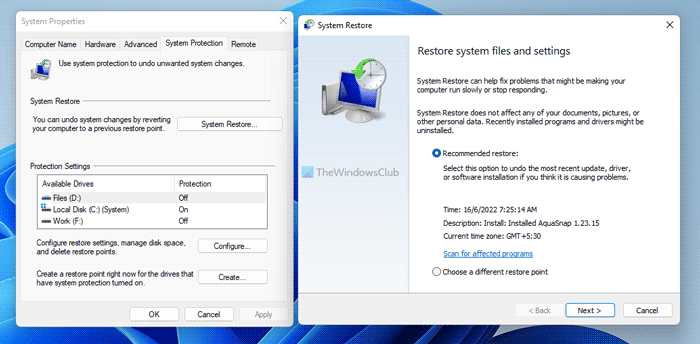If the Startup tab is missing from the Task Manager in Windows 11 or Windows 10 computer, here is how you can get it back. Although it is pretty unusual, it may happen due to various reasons. This article explains most of the common scenarios along with the cause and solutions so that you can get rid of the issue.

Startup tab missing from Task Manager in Windows 11/10
If the Startup tab is missing from the Task Manager in Windows 11/10, follow these steps:
- Check in Safe Mode
- Scan PC with anti-malware and anti-adware removal tools
- Create the Startup folder manually
- Run System File Checker
- Use System Restore point
To learn more about these steps, continue reading.
1] Check in Safe Mode
If you have recently installed hardware, driver, software, or anything else on your computer, and the problem started after that, you can boot Windows in Safe Mode and check if the Startup tab is there or not. If the Startup tab is visible in Safe Mode, you need to remove the driver or hardware while in the Safe Mode.
You can follow this guide to boot your Windows PC in Safe Mode to troubleshoot the issue.
2] Scan PC with anti-malware and anti-adware removal tools
At times, malware or adware can cause the same problem on your computer. As those spammy tools need to run at Windows startup, they can remove the Startup tab from Task Manager and prevent you from removing or managing startup apps. Therefore, it is highly recommended to scan your entire system with a trustworthy anti-malware/anti-virus tool as well as an adware removal tool. For your information, you can take the help of AdwCleaner, Kaspersky Free Antivirus, Avast Antivirus Free, etc.
3] Create the Startup folder manually

If the Startup folder is somehow removed or deleted from your computer, you may encounter the same issue. Therefore, you can try creating the Startup folder manually and add a few items to get the Startup tab back in Task Manager. For that, do the following:
- Open the File Explorer.
- Navigate to this path:
C:\Users\user-name\AppData\Roaming\Microsoft\Windows\Start Menu\Programs - Create a folder called Startup.
- Add a few app shortcuts to this folder.
- Restart your computer.
Then, open the Task Manager and check if the Startup tab is back or not. However, don’t forget to replace user-name with the original username of your account.
4] Run System File Checker
If there are issues in the system files or some system files are corrupted in your computer, there is a chance of getting this problem on a Windows PC. In such situations, you can use the System File Checker. System File Checker or SFC scan helps you find the corrupt files and restore them automatically.
Although it is a time-consuming task, you must run the SFC scan on your computer to get back the Startup tab in Task Manager.
5] Use System Restore point

If none of the aforementioned solutions worked for you, you have only one option left – System Restore point. If you created a System Restore point earlier, you could use it to get back the Startup tab in the Task Manager. You can follow this guide to restore your computer using System Restore point.
Why are there no startup items to display?
There could be two reasons why there are no items in the Startup tab. If you haven’t installed any app that can run at the startup, you may not find anything. Second, if there are some issues in your files and computer, you won’t find any item in the Startup folder.
Read: There are no startup items to display in Task Manager
How do I restore my startup folder?
To restore your Startup folder on Windows 11 or Windows 10 computer, you need to create it manually. For that, you can follow the third solution mentioned in this article. Having said that, open the File Explorer and navigate to this path: C:\Users\user-name\AppData\Roaming\Microsoft\Windows\Start Menu\Programs. Then, create a folder here and name it Startup.
That’s all! Hope this guide helped.
Leave a Reply